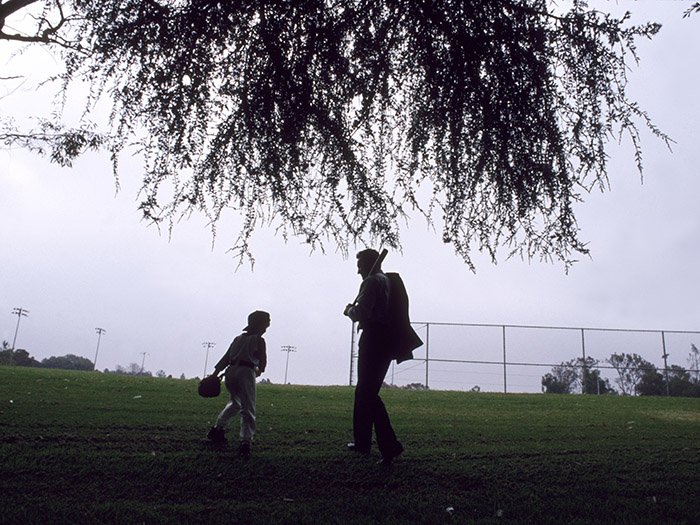Sponsored Content by Travelers
Safety Risks in the Changing Workplace
The age spectrum of the American workforce is widening. Older, retirement-eligible employees are staying on the job longer, sometimes due to financial constraints, and sometimes simply because they want to. Meanwhile, Millennials are making up a larger proportion of payrolls. By 2025 this generation will constitute 40 percent of the American workforce.
The definition of a “workplace” is also expanding. Technology is revolutionizing where, when and how we work, with more employees doing their jobs from home or on the road. While these changes can certainly open up business opportunities, their convergence also increases risk for unprepared employers.
“As the workforce changes, workplace safety risks are also morphing,” said Woody Dwyer, Workers’ Comp Lead, Risk Control, Travelers. “These changes mean employers have to adjust the way they think about keeping workers safe and well.”
In particular, small businesses face unique challenges, balancing safety and wellness against operational needs while they fight to stay competitive. But even they can leverage limited resources to improve safety for employees no matter where, when or how they work.
Here are some ways to remedy key safety risks in the modern workplace:
Safety Risk #1: A Changing Workforce
The average age of the American worker is slowly moving upward as Baby Boomers delay retirement. While employers get to hold on to the knowledge, skills and expertise of their veterans a little longer, they also have to consider safety challenges that become more prevalent with older workers.
“Injury frequency and severity are higher for both new, young workers as well as older, retirement-eligible workers,” Dwyer said. “But the two groups may have different experiences and different mindsets, so their attitudes toward and awareness of safety might be different. Therefore, you need to tailor training differently.”
Remedy: Though the approach may vary, it all comes down to training and reinforcing the safety expectations and culture.
“For an older population, practicing the principles of ergonomics can be impactful,” Dwyer said. Continual safety training and instruction around proper ergonomics is paramount, even for longtime employees. Employers shouldn’t assume that more experienced workers know how to move safely. Reinforcements, reminders and course corrections have value.
“Different companies have different safety practices, and the physical capabilities of workers nearing or past retirement age will be different from those of a recent graduate,” Dwyer said.
With young workers, building safety awareness can begin even before hiring.
“Job descriptions should reflect an emphasis on safety. And behavioral interviewing can identify safety-minded candidates, by asking them how they have responded to risk in previous work scenarios,” Dwyer said.
Carrying through an emphasis on safety during onboarding also drives the message home for younger and older workers alike. Onboarding should consist of hands-on training and practice. For a small retail store, for example, this could include practicing proper reaching and lifting techniques, and safe ladder use.
Safety Risk #2: Tech Revolution
Wearables and sensors have become popular tools for both safety and wellness.
On construction sites or in manufacturing, for example, proximity sensing can alert a worker if they are too close to a piece of machinery or moving equipment, or let a supervisor know if a worker has fallen. There are many sensor-based safety devices on the market, many of them wearable. Wearable fitness trackers and sit-stand desks have also gained popularity as tools to promote overall wellness in the workplace.
Small businesses may be more likely to take advantage of these latest tech tools because they aren’t encumbered by large, complex existing systems; they can change and adapt more easily. And incorporating cutting edge tech can also help to attract talent.
But there is risk involved if these companies don’t do their due diligence.
Remedy: “Be a smart consumer of technology,” Dwyer said.
“Will a piece of technology provide long term value for you? How will you implement it? How will you store and protect the data? Will your workers accept it?” There are generational differences in attitude toward any type of tracking device. Millennials are more willing to give up personal data if they can see a benefit in it.
Employers can also provide guidelines on how to use new tools. For sit-stand desks, for example, workers should switch positions regularly to minimize stress on the body. Using a foot bar when standing can also help to take pressure off the lower back.
“Some reports say sitting is the new smoking, but standing for long periods is not good for the body either,” Dwyer said.
Safety Risk #3: Open to Distraction
Open workspaces foster collaboration — but can also usher in distraction. Especially in an office setting where workers may be on the phone frequently, an open workspace can be counterproductive.
The more distracted workers are, the more susceptible they may be to slips, trips and falls — one of the most common causes of workplace injuries.
Remedy: Dwyer recommends having designated quiet work areas where employees can escape the noise.
Companies should also have policies to restrict the use of mobile devices in hazardous work areas such as active construction sites, manufacturing areas, or while driving.
“Cubicle and desk design matter in an office setting, too,” he said. “Consider the design and layout of your floor plan, and work with your furniture vendor to make sure everyone will have the space to do their jobs comfortably.
Safety Risk #4: Borderless Business
Thanks to cloud technology and globalization, everything is interconnected, and even small businesses are likely to have some type of international footprint. Which means more trains, planes and hotel stays for employees.
Travel imposes its own stresses on the body and can cause extra fatigue. It might involve late-night driving or being in unfamiliar environments, which increases risk of injury.
Controlling workers’ environments while they’re on the road may not be possible, but employers can provide training to improve safety and security awareness while traveling.
Remedy: “Ergonomics and situational awareness matter out of the office too,” Dwyer said.
To help workers cope with fatigue and navigate unfamiliar places, companies should schedule work to help avoid late hours while traveling and encourage employees to get adequate rest before driving. They can also encourage mindfulness.
“When in strange new places, you need to have a heightened sense of awareness and alertness because you can’t count on the familiar to keep you safe,” Dwyer said.
Even in familiar settings, applying ergonomics reduces risk of injury.
“Use rolling bags when possible, or backpacks that distribute weight evenly, which can reduce pressure on the back when you’re traveling all day. Proper footwear also helps to improve comfort and to reduce the risk of slips, trips and falls,” he said.
Hotel rooms and meeting areas may also be more dimly lit. Workers on the road can protect their eyes by seeking spaces with proper lighting.
Address Evolving Risks through Ongoing Engagement
These are just four of the challenges small businesses will face as workplace and workforce risks continue to evolve, but these and many workplace safety risks can be mitigated in part by a focus on overall well-being.
In addition to providing safety training, implementing new tools and technologies, and developing policies and procedures, investing in employees’ wellness also builds trust and loyalty while helping to prevent injuries. As rising medical expenses drive up claims costs, prevention can help win the day for small businesses with little margin to spare.
“Many small businesses think they don’t have the money for wellness programs, but it can be done in small and simple ways,” Dwyer said.
Offering biometric screens at work, organizing company walks, working with local gyms to provide discounts, or simply gathering resources on wellness for employees to access on their own can benefit employees’ health.
Investing in wellness initiatives can in turn improve employee engagement with other efforts around ergonomics and safety.
Travelers helps small businesses effectively improve workplace safety by attracting and hiring safety-minded candidates, onboarding and training new employees, and continually supporting and engaging those employees through Travelers Workforce AdvantageSM, its comprehensive approach to safety and workers’ comp management.
“The approach hits the three key areas where employers can maximize their safety message: hiring, onboarding and training, and continual engagement,” Dwyer said. No matter how the workforce and workplace continue to evolve, putting safety first will always pay off for employers.
To learn more, visit https://www.travelers.com/resources/workplace-safety/helping-employers-manage-a-safer-workforce.aspx.
This article was produced by the R&I Brand Studio, a unit of the advertising department of Risk & Insurance, in collaboration with Travelers. The editorial staff of Risk & Insurance had no role in its preparation.












